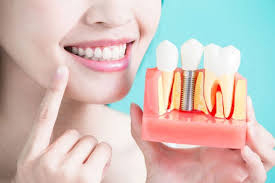Shine Bright with Laser Dentistry Cleaning: Your Guide to a Healthy Smile
In the ever-evolving world of dentistry, laser technology has revolutionized dental cleaning, offering a modern alternative to traditional techniques. Laser Dentistry Cleaning is gaining popularity due to its precision, comfort, and effectiveness in maintaining oral health. But what exactly is it? Is it worth trying, and are there any risks involved? Let’s explore all aspects of Laser Dentistry Cleaning, including its benefits, types, and potential side effects, to help you make an informed decision about your dental care.
What is Laser Dentistry Cleaning?
Laser Dentistry Cleaning involves the use of advanced laser
technology to clean teeth, treat gum disease, and improve overall oral health.
Lasers emit a concentrated beam of light energy to remove plaque, tartar, and
bacteria from teeth and gums with minimal discomfort and maximum precision.
This cutting-edge technique is often used as an alternative to traditional
dental tools like scalers and drills.
Benefits of Laser Dentistry Cleaning
·
Minimally Invasive: Unlike traditional methods,
lasers do not require physical scraping, making the process gentler on gums and
teeth.
· Reduced Discomfort: Patients experience less pain and sensitivity during and after the procedure.
·
Effective for Deep Cleaning: Lasers can reach
deeper pockets in the gums, effectively removing bacteria and preventing gum
disease.
·
Lower Risk of Infection: The heat from the laser
sterilizes the treatment area, reducing the chance of bacterial infection.
Precision: Lasers target specific areas, leaving surrounding healthy tissues unaffected.
· Faster Healing: The procedure stimulates tissue regeneration and reduces recovery time.
Types of Laser Dentistry Cleaning
Laser Dentistry Cleaning can be categorized based on the
type of laser and the area being treated:
1. Soft Tissue Laser Cleaning
Soft tissue lasers are used to target the gums and other
soft tissues in the mouth. These lasers are precise, minimize bleeding, and
promote faster healing.
Applications:
·
Gum Contouring: Reshaping the gumline for
aesthetic improvements.
·
Gum Disease Treatment: Removing infected tissue
and sterilizing the area.
·
Crown Lengthening: Exposing more of the tooth
for restorative or cosmetic purposes.
·
Frenectomy: Treating issues related to
tongue-tie or lip-tie.
·
Treatment of Mouth Sores: Reducing discomfort
from canker sores and cold sores.
2. Hard Tissue Laser Dentistry cleaning
Hard tissue lasers are designed to work on teeth and bones.
They are highly effective for precision cutting and removing hard surfaces.
Applications:
·
Cavity Detection and Removal: Removing decay
without the need for drills.
·
Tooth Preparation: Shaping the tooth for
fillings or other restorations.
·
Treatment of Tooth Sensitivity: Sealing exposed
dentin to reduce sensitivity.
3. Laser Whitening
Laser teeth whitening is a cosmetic treatment that uses
laser technology to activate bleaching agents, providing faster and more
effective results.
Applications:
·
Whitening stained or discolored teeth in a
single session.
4. Laser-Assisted Root Canal Therapy
Lasers can be used in root canal procedures to sterilize the
inner tooth more effectively, ensuring bacteria are thoroughly eliminated.
Applications:
·
Enhancing the precision and success rate of root
canal treatments.
5. Laser-Assisted Biopsies and Tumor Removal
Dental lasers are used to remove or reshape tissue for
biopsies or treat benign oral tumors.
Applications:
·
Biopsies: Taking tissue samples for testing.
·
Tumor Removal: Treating non-cancerous growths in
the mouth.
What Are the Side Effects of Laser Dentistry Cleaning?
While Laser Dentistry Cleaning is generally safe and
well-tolerated, there are some potential side effects to be aware of:
1. Temporary Sensitivity
Some patients may experience sensitivity in their teeth and
gums after the procedure. This usually subsides within a few days.
2. Mild Discomfort
Although lasers are less invasive, some individuals may feel
mild discomfort during or after the procedure, particularly if deep gum pockets
are treated.
3. Risk of Tissue Damage
In rare cases, improper use of the laser can lead to minor
tissue damage. This emphasizes the importance of choosing a skilled and
experienced dentist.
4. Cost Considerations
Laser dentistry procedures can be more expensive than
traditional methods, which might be a drawback for some patients.
Conclusion
Laser Dentistry Cleaning offers a modern, effective, and comfortable solution for maintaining oral health. From its precision to faster healing times, the benefits make it a valuable option for many. However, understanding the procedure, its types, and potential side effects is essential to make an informed choice.
If you’re ready to experience the future of dental care,
contact Cosmodent dental clinic today to book your Laser Dentistry Cleaning appointment. Let us help
you achieve a sparkling, healthy smile that shines bright!
.png)


Comments
Post a Comment